Feature 23 min read
What does the future hold for hydrogen mobility?
Is hydrogen a way of reducing our reliance on oil? Ben White speaks to some of the main protagonists that are maintaining the inertia behind the adoption of the fuel, explores the hurdles that stand in its way, and looks at the opportunities for success that are presenting themselves.
Back in 2016 the world's most famous car journalist, Jeremy Clarkson, nailed his colours to the AFV mast. In an article in The Sunday Times Driving, Clarkson wrote: “...if a car produced only water and could power our house at night, we'd buy it. And then the motor industry would stop fiddling about with its pointless batteries and its hybrid-drive systems and get on the only road where there is actually a future for personal mobility. The hydrogen road."
Despite Clarkson's considerable sway among not only his avid fans, but also the automotive industry and even in applying gentle pressure to government, hydrogen is lagging behind battery electrification. This is despite the fact that in many ways, hydrogen really is the ideal like-for-like replacement for fossil fuels.
It can be stored and transported like LPG currently is; it can be dispensed from a pump while you stand and wait; it fills a physical tank and when you start driving around that tank gradually and imperceptibly empties. The infrastructure that we currently have to supply liquid fuels is there and, with investment, could be dispensing hydrogen. Even hydrogen fuel cell-powered cars have a range that is equivalent to that of a common-or-garden petrol hatchback.
Given all of this, why are most car makers defying not only Clarkson's weighty – and somewhat noisy – opinion, and logic, in the pursuit of battery electric vehicles? Why on earth aren't they tripping over themselves to make fuel cell electric vehicles (FCEVs)? And why aren't the major fuel suppliers following suit to produce and supply hydrogen in place of hydrocarbon-based fuels?
So many questions, and only so many words. But the reality is that the alternative fuel landscape is a complex one filled with misconceptions and barriers to progress, and what might seem to be the best option for mass personal transport on paper is potentially suited to different areas of moving people – and things – from place to place.
Hydrogen fuel cells in a nutshell
On paper the equation is very simple; hydrogen + oxygen = electricity and water vapour. In practice it's a bit more complex than that but stick with us here.
A fuel cell is made up of four main parts – the anode, cathode, electrolyte (proton exchange membrane or PEM) and a catalyst. It works by passing hydrogen through the anode – effectively the fuel entering the engine. Oxygen from fresh air is passed through the cathode – like air being drawn into the cylinders. At the anode site, the hydrogen molecules are split into electrons and protons. The protons pass through the electrolyte membrane (think of the membrane like the combustion process turning fuel into useful energy) and are effectively a waste product. The electrons are forced through a circuit, generating an electric current which is what powers a fuel cell electric vehicle, with excess heat also being generated in the process. At the cathode, the protons, electrons, and oxygen combine to produce water – the only physical 'exhaust' of an FCEV.
They're quiet, durable, get around 80 per cent efficiency and are scalable from small enough to power a toy car, through to being big enough to power... Well, almost anything given enough space and enough raw hydrogen. Our guide to hydrogen fuel cell vehicles is worth a read.
Who's making fuel cell electric vehicles, then?
Very few manufacturers actually produce FCEVs for public purchase. The main protagonists are Hyundai, Toyota and Honda, all of which have FCEVs coming off their production lines, albeit in limited numbers and in limited markets. In the UK at least, our choice is limited to three cars – the Hyundai Nexo FCEV, Toyota Mirai or Honda Clarity.
Other brands are slowly getting in on the act and at least exploring the idea of adding hydrogen fuel cells to their mix of fuel types. BMW unveiled the i Hydrogen at Frankfurt; Audi has renewed its commitment to the fuel with its h-tron; Mercedes-Benz actually launched its B-Class-based F-Cell FCEV back in 2010 and, like Audi, assured us that it’s still very much pursuing the technology with Daimler Chairman Ola Kallenius stating: “We still believe fuel cell is part of the solution to zero-emissions mobility in the future.”
Unlike with EVs, where technology is easily accessible ‘off the shelf’, FCEVs don’t lend themselves so easily to start-up car makers, however. As such there isn’t the same plethora of ambitious outfits entering the fray, but that hasn’t stopped Riversimple – a UK-based FCEV company which is developing both fuel cell technology itself, and its ultra-efficient two-seat city car, the Rasa. However, Riverside is one of the very few straying down this particular path.
Going back to the car makers… Hyundai has been at the forefront of FCEV production since it started making its Tucson FCEV back in 2005. Eight years down the line and with a new generation ix35 FCEV developed, the Korean brand announced that it was putting the car into series production at its Ulsan plant with a run of 10,000 units – unprecedented figures at the time.
By 2015, a fraction of the total number had been produced, however, with just over 100 making it to the UK. And most of these were leased to NGOs and used as demonstrators by Hyundai itself. At the time there were six publicly-available hydrogen filling stations here, mostly in or around London, so whilst the public might technically have been able to buy an FCEV (for around £60,000) and use it on the road, it wasn’t a realistic proposition for, well, anyone.
And what about the hydrogen gas itself?
Alongside the launch of ix35 FCEV in the UK, various partnerships and strategies for making, distributing and storing the all-important hydrogen gas were coming to the fore. ITM Power – a British firm with an existing foothold in the market and big ambitions – had developed a way of enabling existing forecourts to be equipped to produce hydrogen on-site. After all, to create the gas by electrolysis only requires electrical energy (from solar or wind) and water.
Other companies such as Air Products joined in with schemes such as the London Hydrogen Network Expansion project which sought to increase the availability of the fuel in and around the capital. Air Products’ expertise in storage and transportation of gas made them the ideal counterpoint to ITM Power’s localised approach to hydrogen production, ensuring that it also had a ready-made distribution network to supply filling stations nationwide. Shell has been keen to get on board with hydrogen, no doubt wary of the decline it will see in fuel sales as EVs grow in popularity and its access to the gas as a by-product of petrochemical processes.
What are the drawbacks for hydrogen?
Given all of this effort in the mid-2010s and with the likes of Toyota and Honda starting to offer limited stock of their FCEVs for sale at around the same time, you’d have thought that today there is a modest-yet-effective network of places to stop for a drop of H2. Unfortunately, you’d be wrong; since 2013 the number of hydrogen-equipped filling stations has grown to a grand total of 14. Yep – 14, which makes FCEVs utterly dead in the water as a proposition for pretty much everyone in the UK.
And that’s before you get onto the £66k price tag of something like a Toyota Mirai or Hyundai Nexo FCEV. Part of this is the cost in precious metals to make a fuel cell. For example, a fuel cell that produces 50kW uses somewhere in the ballpark of 50g of platinum which costs £1500. A Toyota Mirai’s 113kW fuel cell is therefore knocking on the door of £3500 in platinum alone. BMW estimates that a fuel cell powertrain costs around ten times that of the equivalent battery electric option, and many times more than a run-of-the-mill internal combustion engine.
Manufacturers are well aware of this cost issue. Hyundai told us: “We are working hard to reduce the costs of the technology and to make them more comparable to existing EV propulsion and believe that this can happen within five years with a volume of circa 200,000 vehicles globally. Demand will increase when more cars are available and so by making strategic partnerships with other OEMS, such as ours with Audi and Toyota's with BMW, we can bring more cars to market.”
Hyundai's tie-up with Audi will see companies sharing technology and, like Toyota's deal with BMW, the German companies know that they trail their Asian counterparts and must leverage their experience to speed up FCEV development. Audi Chariman, Bram Schot, said: “We really want to speed it up. We are going to put more priority into hydrogen fuel cells – more money, more capacity of people and more confidence.”
The other problem with hydrogen is that it’s not cheap to produce. Typically bought per kilogram, it comes in at around £10.70/kg, and with FCEV cars like the Toyota Miari able to hold 5kg, you’re looking at petrol-like prices mile-for-mile. An EV with a 60kWh battery could be charged at home for as little as £4.20, and whilst that might only get you 220 miles compared to the Mirai’s 400 plus miles, it’s still considerably cheaper for the same range.
Looking at the same 2013-present period in the context of battery electric vehicles and things couldn’t be more different. EVs have exploded in popularity and it’s obvious to see why. You can buy one for less than £30k (and prices are steadily coming down), charge it at home or never be more than a few miles from a public charger now that the number of charging connectors in the UK has surpassed the 30,000 mark. Car companies have invested billions in battery, safety, design and connectivity technology; EVs are now as much a lifestyle statement as they are a vehicle choice.
The public is voting with its wallet, too. Month after month in 2019 we were seeing triple digit year-on-year increases in EV registrations in the UK, and there are over 100 different types of pure EV or plug-in hybrid available to buy. This is growing monthly, with 2020 set to be a bumper year for EV launches, and the public’s appetite for them continues to grow.
Despite the odds, is there still momentum behind hydrogen as a fuel source?
Many of the white papers that have studied the complexities behind hitting the net zero 2050 emissions target suggest that it will make up a crucial part of a future vehicle fuel mix. Bodies like the North West Hydrogen Alliance agree, car companies that have already invested in the tech continue to believe in its viability, and the government hasn’t abandoned the idea by any stretch.
Put it this way, manufacturers like BMW wouldn’t be bothering with it if there wasn’t at least a spark of hope for the fuel and the German can brand reaffirmed its faith in hydrogen at the Frankfurt Motor Show in 2019. Director of development Klaus Frölich said: “In the early 2020s there will be a small series of X5 hydrogen cars and by 2025 there be a mass producible hydrogen car available, with Toyota.”
Frölich admitted that this initial run of hydrogen X5s will be cripplingly expensive and therefore will be available to a very few people via a lease scheme. Whilst BMW admits itself that it could put a hydrogen fuel stack into production today, Frölich said: “It doesn't make sense to scale the fuel cell when the stack is 80,000 euros. It makes sense to scale it when it's 10,000 euros.”
Meanwhile, Honda is leveraging its partnership with GM in order to reduce the cost of its next generation of FCEVs. Toshihiro Mibe, Director of Honda R&D, said: “With the Clarity Fuel Cell, average customers can finally afford FCVs. But we still have work to do, as Clarity Fuel Cell purchases are subsidized by the government, which is not how it should be. To that end, we need to make FCVs more common. Honda is currently working with GM to develop the next FCV, and believes this will be the key to mass-adoption and cost benefits, as well as other possibilities such as developing the infrastructure.”
Hyundai remains a strong and vocal proponent of hydrogen as part of a future fuel mix, especially when set against the government's Road to Zero plan. The Korean brand rightly points out that in the UK, the government must offer a top-down approach to hydrogen; after all, there's only so much that private companies can do without legislation in support. Hyundai told us: “We believe that the advantages of the technology are generally understood but more education is required. However until the refuelling infrastructure improves there will be a barrier to adoption in larger numbers. If the government’s Road to Zero plans is to be met, government will need to ensure that all relevant legislation policies are fully aligned to R2Z plan thereby removing certain barriers to the development of the refuelling structure.”
But can hydrogen realistically gain any ground on battery electric as a means of getting us from A to B or does its usefulness lie in other transport applications?
Global infrastructure and perceptions of danger
Despite the numerous hurdles it must overcome to gain mass-market traction, precedents have already been set in Scandinavia, South Korea, Japan and in the USA. In all these locations the infrastructure has been installed which has allowed hydrogen fuel cell cars to become a genuinely viable option for consumers.
In northern Europe the Scandinavian Hydrogen Highway Partnership has led to there being 20 refuelling stations split between Norway, Sweden and Denmark, linking the capital cities of each country along the ‘Nordic Hydrogen Corridor’. In South Korea, where Hyundai develops and builds its hydrogen fuel cells and there are around 3000 FCEVs on the road, there are 29 refuelling stations – well short of the 114 that the government had planned by this time mind. Japan has over 100 filling stations whilst across the USA there are around 50, with over 40 of these located in California.
But in two of these markets (Scandinavia and South Korea) there have been incidents that have threatened to shut down hydrogen networks altogether. Back in June 2019 filling stations across Scandinavia temporarily closed after a filling station in Oslo, Norway, run by Uno-X – the country’s leading hydrogen filling station provider across Scandinavia – exploded. Thankfully nobody was badly injured, but both Toyota and Hyundai paused the sale of FCEVs whilst the fuel was unavailable and provided internal combustion courtesy cars to owners who would otherwise be stranded.
More ominously, in May of the same year, a hydrogen storage tank at a government research project in the rural city of Gangneung exploded. It destroyed a complex about half the size of a soccer field, killing two and injuring six. It’s thought that oxygen found its way into the tank and was ignited by rogue spark. Just four months later three Korean workers were burned at a chemical plant caused by a hydrogen leak and subsequent fire.
Of course, petrol station fires and deaths related to them aren’t exactly rare in comparison; fuel spillages and subsequent fires in poorer nations consistently claim the lives of dozens, so why the major shut-down after comparatively small events?
Erasing the image
There’s plenty of misconception about the safety of hydrogen when used as a fuel. As Hydrogen Europe (a body that represents users of, and promotes use of the gas across the continent) points out, “in people’s minds they hear hydrogen and think Hindenburg, however this is a common misconception”. In that case, it was the paint on the airship’s skin and the diesel fuel for the engines which burned most energetically; the hydrogen would’ve been consumed above the passenger’s heads very rapidly. Substitute hydrogen for inert helium in the Hindenburg and the result would’ve been the same.
The truth is that hydrogen is at least as safe as petrol, and many situations its characteristics make it safer. Hyundai's Nexo FCEV attained a perfect Euro NCAP five-star safety rating, as a case in point.
The main factor here is in the way it is stored. In fuel cell-powered cars, the storage tanks are nigh-on indestructible and are subject to rigorous tests including: being cycled between depressurised to full operating pressure half a million times without fault; being dropped from height; shot at point-blank range with a rifle; burned for 30 minutes in a bonfire; crushed with 150 tons of pressure; and being exposed to acids and salts.
If a tank is penetrated, hydrogen burns fast, clean and with very little radiant heat. It doesn’t spread like a liquid and cause acrid smoke or ash. More to the point, because hydrogen is the lightest element in the world, it tends to make a b-line for the sky rather than hanging around to catch fire.
In short, the public’s perception is preconditioned to think that hydrogen is dangerous, so when accidents do happen, they perhaps garner more coverage than they are due. Being a new and comparatively rare fuel source, the companies involved need to be seen to be taking immediate action which, rather than reassuring the public that there is no inherent danger, magnify the misconception. Familiarity and education is what is needed, but when there are few chances to expose the public to hydrogen-powered vehicles it's no easy task.
For Toyota, its job of providing public transport for the 2020 Tokyo Olympics is all part of the education process with Masaki Ito, General Manager of Toyota's Olympics division stating that: “Hydrogen still has this image of being dangerous – that it might explode – and our aim with the Olympics is to erase this image.” To that end if you're planning on attending this year’s Olympics, you'll almost certainly board a Toyota Sora (an acronym for the water cycle: sky, ocean, river, air) hydrogen bus. Whilst this is obviously a good way to enable a smooth punctual way of moving people about, ultimately for Toyota it is a way of bringing the public round to the idea of hydrogen.
How hydrogen can offer a clean energy future
Despite everything it must overcome, hydrogen is destined to become a fuel of the future for personal transport. Around the world as governments react to the climate crisis and look to put low, zero or even negative net emissions legislation into practice, it’s becoming apparent that we’ll need more options than just electricity for future mobility.
Honda's Toshihiro Mibe is clear about this with regards the company's view on reducing CO2 from its vehicles: “Honda believes electric vehicles (EVs), plug-in hybrid vehicles, and FCVs powered by hydrogen are effective methods.”
But maybe we’re thinking about hydrogen’s place in the fuel mix with too much bias towards personal mobility. After all, a quarter of road-based emissions in the EU come from freight and other heavy goods vehicles such as buses. Trains, construction machinery and shipping are also woeful when it comes to clean air, simply as they don’t have to meet the same stringent emissions standards as private cars. Shipping, for example, alters climate simply due to the trails of exhaust vessels leave, and Carnival Cruise ships – on their own – emit more harmful gasses than all of Europe’s cars combined.
Where many commentators see hydrogen making the most impact on a clean fuel future is in the heavy goods and bulk carrying sectors. Major car brands are already heavily involved, with Hyundai and Toyota particularly prevalent. Even Renault is developing hydrogen versions of its light goods vehicles in the form of the Master Z.E. Hydrogen and Kangoo Z.E. Hydrogen.
When it comes to the mobility, and in particular public transport, Hyundai has been at the forefront of this charge. In Korea it has the aim of deploying 1000 fuel cell buses by 2022 and has already delivered 30 such buses split amongst six cities in the country. Hyundai went into partnership with Cummins towards the end of 2019 to drive fuel cell development and distribution. Reported at its Chairman's New Year Address, Chairman Chung said that developing a hydrogen ecosystem is a top priority for Hyundai.
“In particular, in our fuel-cell electric vehicle business, where we boast the world’s top technological competitiveness, we will hit our stride by providing fuel-cell systems to customers not only in the automotive industry but also in other sectors,” he pointed out. “Furthermore, we will add momentum to expanding the hydrogen ecosystem and its infrastructure by cooperating with partners around the world.”
The Cummins deal is just one part of this, and it may yet bear even more fruit in the US haulage market in which Cummins is such a stalwart. In October 2019, Hyundai revealed its HDC-6 Neptune concept, a fuel cell-powered lorry tractor unit loaded with technology and modelled with a nod to the streamliner locomotives of the early 20th century. More imminently, Hyundai plans to deliver 1600 fuel cell trucks to Switzerland alongside developing a hydrogen mobility ecosystem in the country by 2025, in partnership with a company called H2 Energy.
In the UK, single- and double-decker bus manufacturer, Wrightbus, which was recently rescued by Bamford Bus Company (owned by Jo Bamford of JCB fame), is leading the charge to decarbonise London's bus fleet. Transport for London has recently allocated £12 million into rolling out hydrogen double-deckers across three of its most important central London routes, and in collaboration with Bamford's existing Ryse Hydrogen firm, will supply 20 buses and associated infrastructure. The goal is to have a carbon-free public transport system in the capital by 2030.
Bamford said: “With radical reductions needed to reach net zero emissions by 2050, hydrogen technology is an important part of the solution. In can be deployed at scale and is the quickest and easiest route to decarbonising transport while also improving air quality in our towns and cities.”
It's not just buses and lorries where hydrogen will potentially find its niche in the future; even bigger forms of transport could quite easily switch over to the gas and decarbonise their sectors. And given the fact that brands like Toyota and Hyundai are leaders in their fields and both have a hand in the world of heavy vehicles (unlike Honda), their technology will almost certainly play a part.
Hydrogen fuel cell trains already operate in Germany and limited trials have taken place here in the UK. Where electrification is difficult or impossible, hydrogen is the best way of removing carbon (which typically comes in the form of diesel-electric) from the network. Here, the hope is that existing rolling stock converted to hydrogen might start running by 2022.
Over in Korea, train manufacturer Hyundai Rotem – which is part of the Hyundai Group – has signed a memorandum of understanding with Hyundai Motor's Mabuchi Research Institute to develop fuel cell trains. It is hoping to tap into a market which is potentially worth around $600bn worldwide in substituting diesel trains with hydrogen-powered ones.
Haulage and public transport: A common factor
Where hydrogen falls down as a fuel for mass-market personal transport is, as we have already pointed out, in the lack of infrastructure and slow roll-out of new filling stations. But whilst this is its Achilles heel, for buses, trucks and trains their depot-based nature means it's potentially a non-issue.
One of the main reasons that TfL is going down the route of fuel cell buses is that it makes logistical sense from a refuelling point of view. It takes just seven minutes to refill a hydrogen tank and it can be done at the depot. Similarly, with light goods vehicles that operate from a central hub the same system would work. For HGVs, countries could develop smaller networks of hydrogen filling stations along strategic transit routes so that hauliers could plan journeys around them.
This method of working negates the need for a fast expansion of a public hydrogen refuelling station network and would make hydrogen viable for haulage and public transport far sooner than it could be (or potentially ever will be) for mass personal transportation. Of course, production and distribution are still major considerations to supply the fuel stations that would exist, but herein lays an opportunity for forward-thinking businesses to install on-site, clean, small-scale production.
Hydrogen provides light at the end of the tunnel
Going back to Jeremy Clarkson's comments that the industry should “...get on the only road where there is actually a future for personal mobility”, the fact of the matter is that the situation is far more complex than Clarkson makes out. Many of the world's biggest car companies do indeed see hydrogen as a key part of their future fuel mix, but getting there is a very tall order.
The investment and focus on battery electric powertrains must take some of the culpability, but from the car manufacturers' point of view, the consumer demand is there, and BEVs are quicker and easier to get to market, plus people have access to charging infrastructure. After all, at the most basic level everyone has access to a plug socket.
Hydrogen's problem is the very same thing that makes it such an attractive proposition in the eyes of people like Clarkson; on the face of it, it's little different to an existing hydrocarbon-based fuel and the infrastructure essentially exists. Except it doesn't – and nor does the production and distribution networks required to make it viable for the buying public.
However, there is light at the end of the tunnel and you can bet that slowly but surely hydrogen will make its way into our lives – albeit much later and much slower than battery electric vehicles have done. Manufacturer enthusiasm seems unaffected, despite the hurdles to overcome globally. In part, this must be down to the billions already invested and, in the case of Hyundai, the $6.7bn it has recently added into the Hydrogen pot. In many cases their efforts have been reinvigorated over the past year with new partnerships and consolidated efforts to share and democratise technology.
Where hydrogen may make the biggest difference in the long term, however, is in powering heavy transport. It fills the gap that batteries simply aren't up to the task of filling and more to the point, it actually lends itself to applications like urban bus networks where it has the double-whammy of cleaning up the air and – thanks to depot-based infrastructure – being no more or less convenient than diesel to store and dispense.
So, the chances are you won't be powering yourself around the country by hydrogen any time soon. But your journey to work on the bus, and the transportation that delivers the goods you buy from the shops, may well be hydrogen-powered in the not-too-distant future.

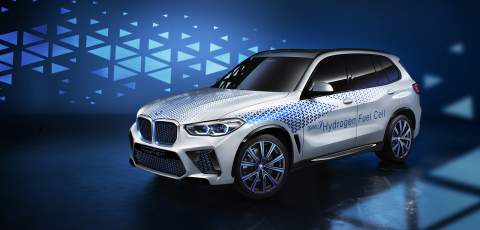
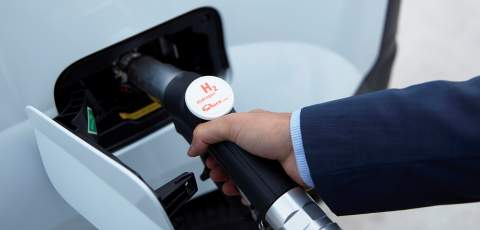
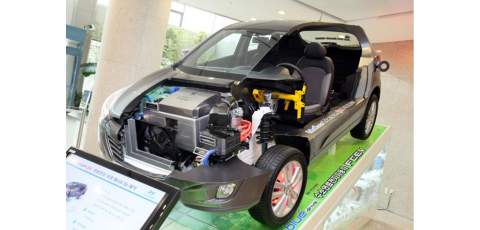
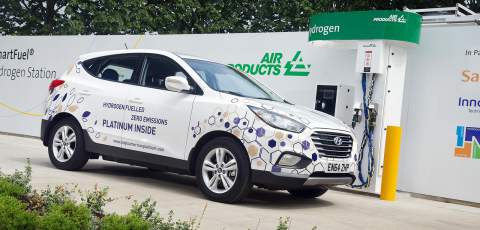
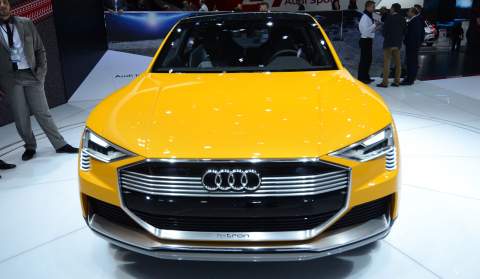
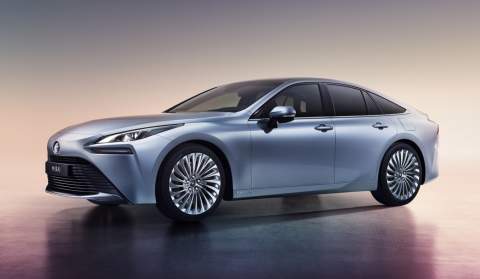
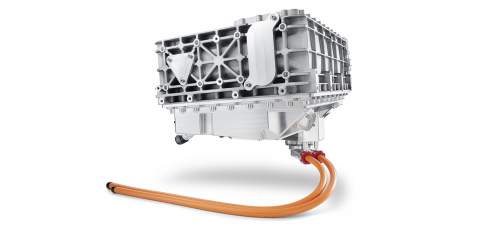
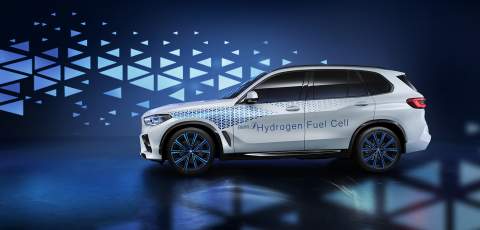
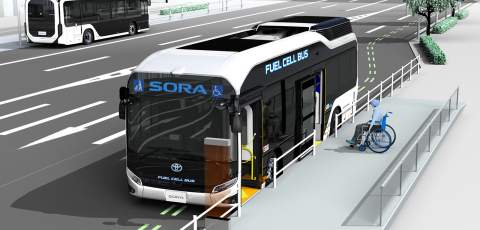
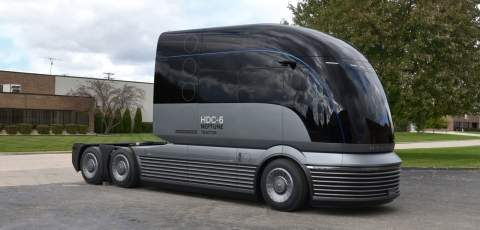
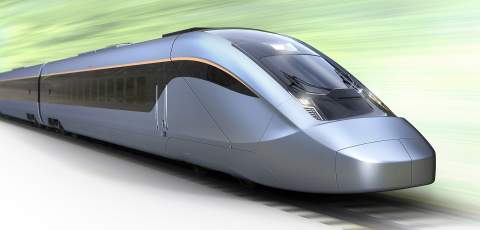
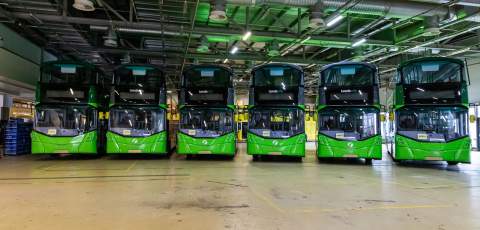
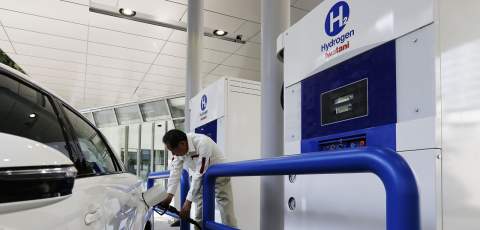

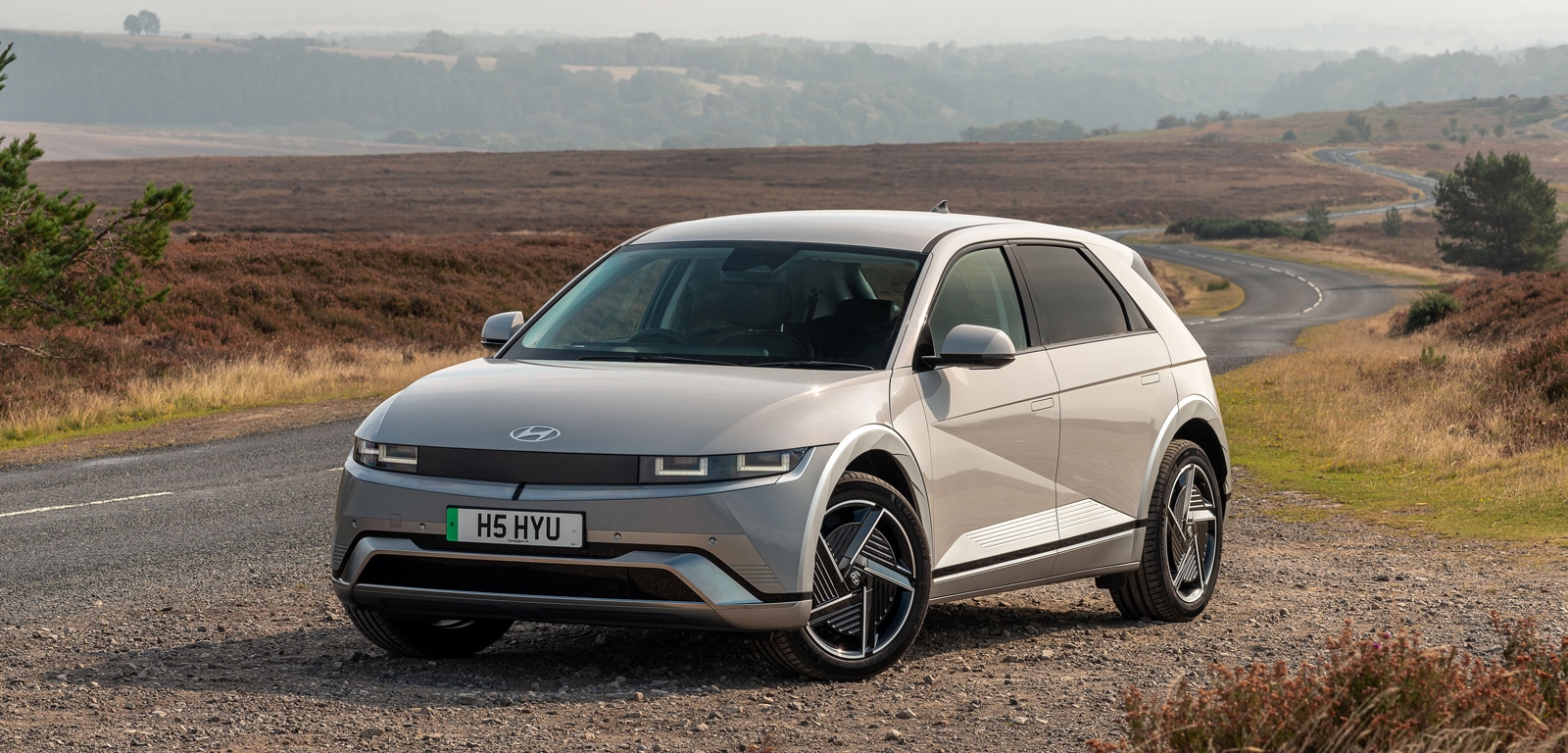
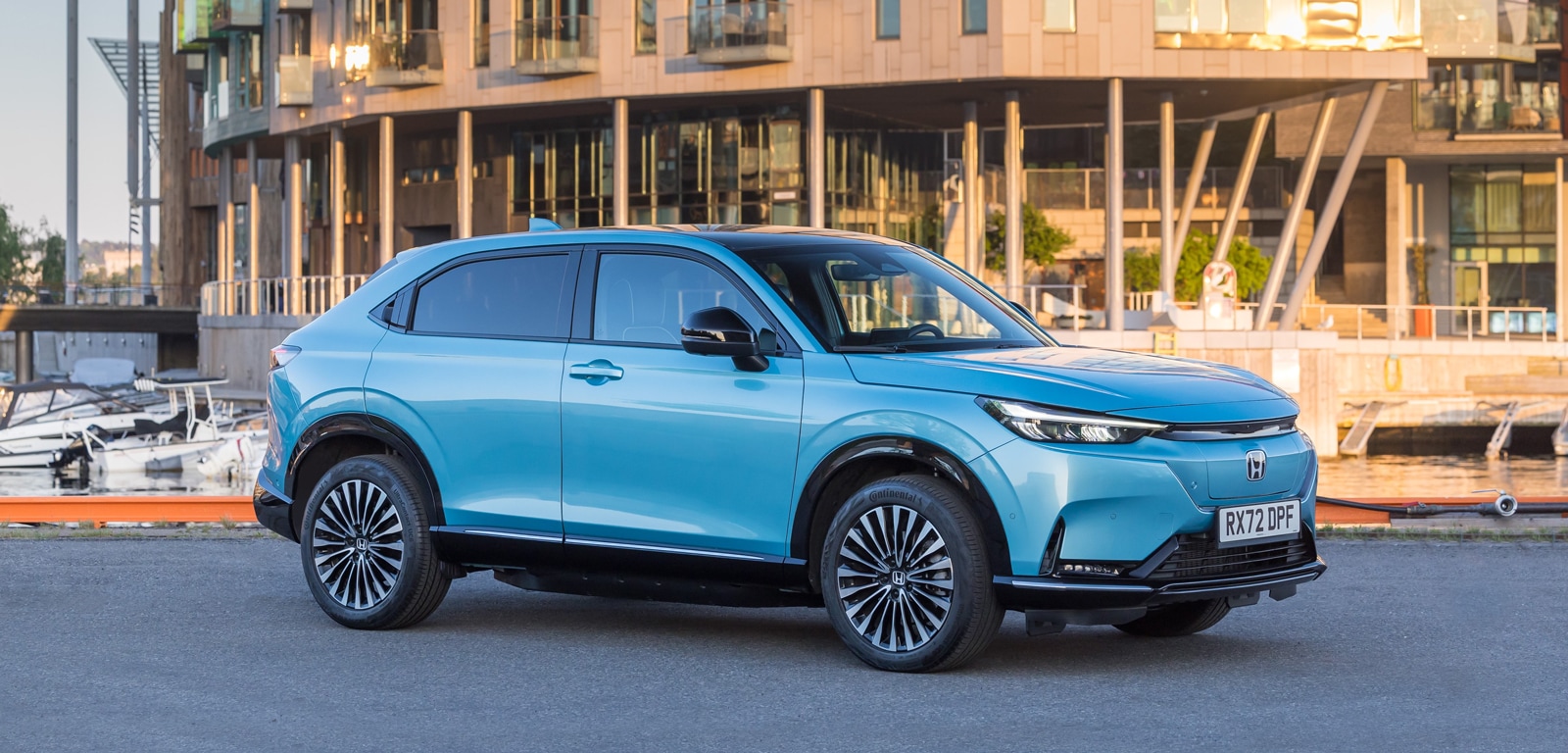
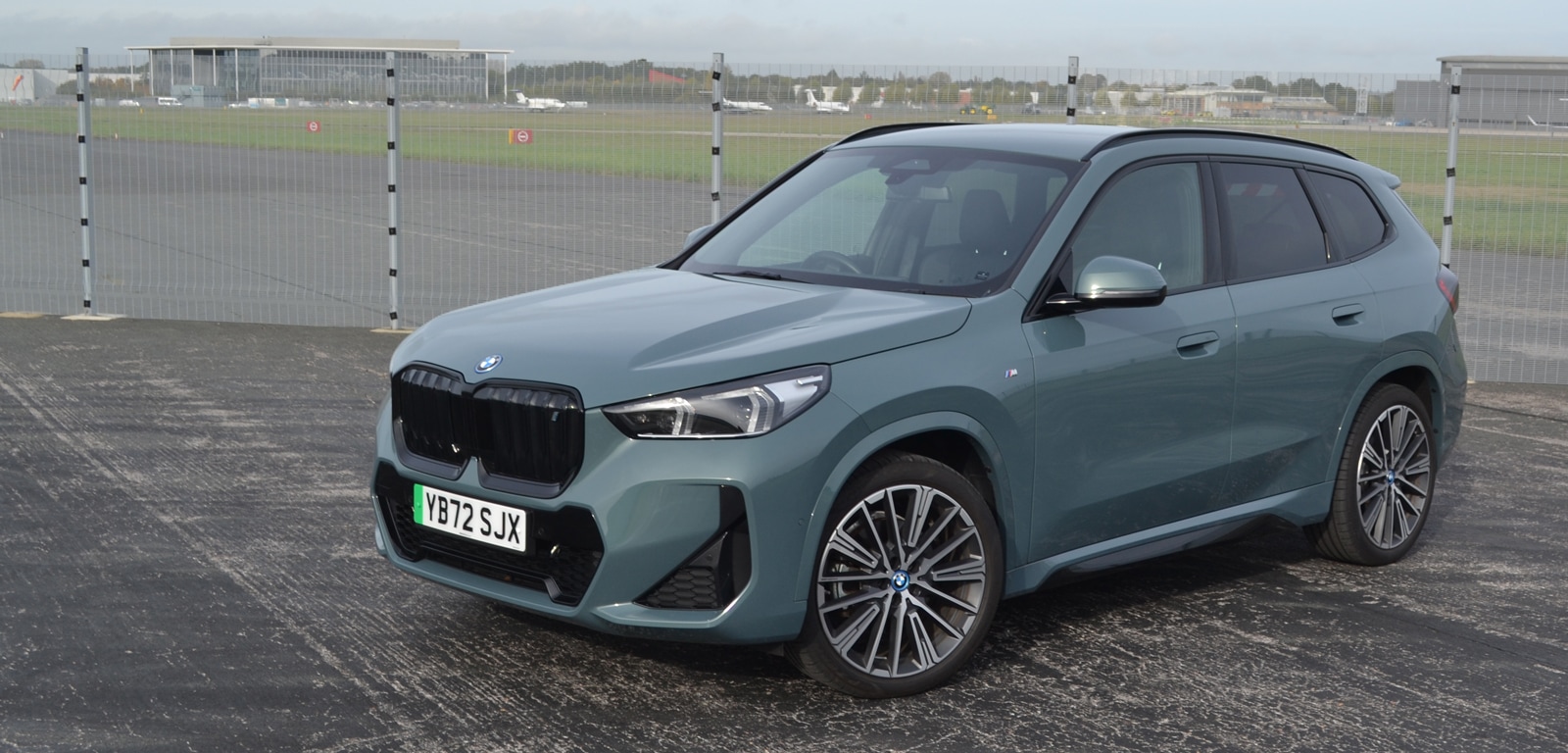

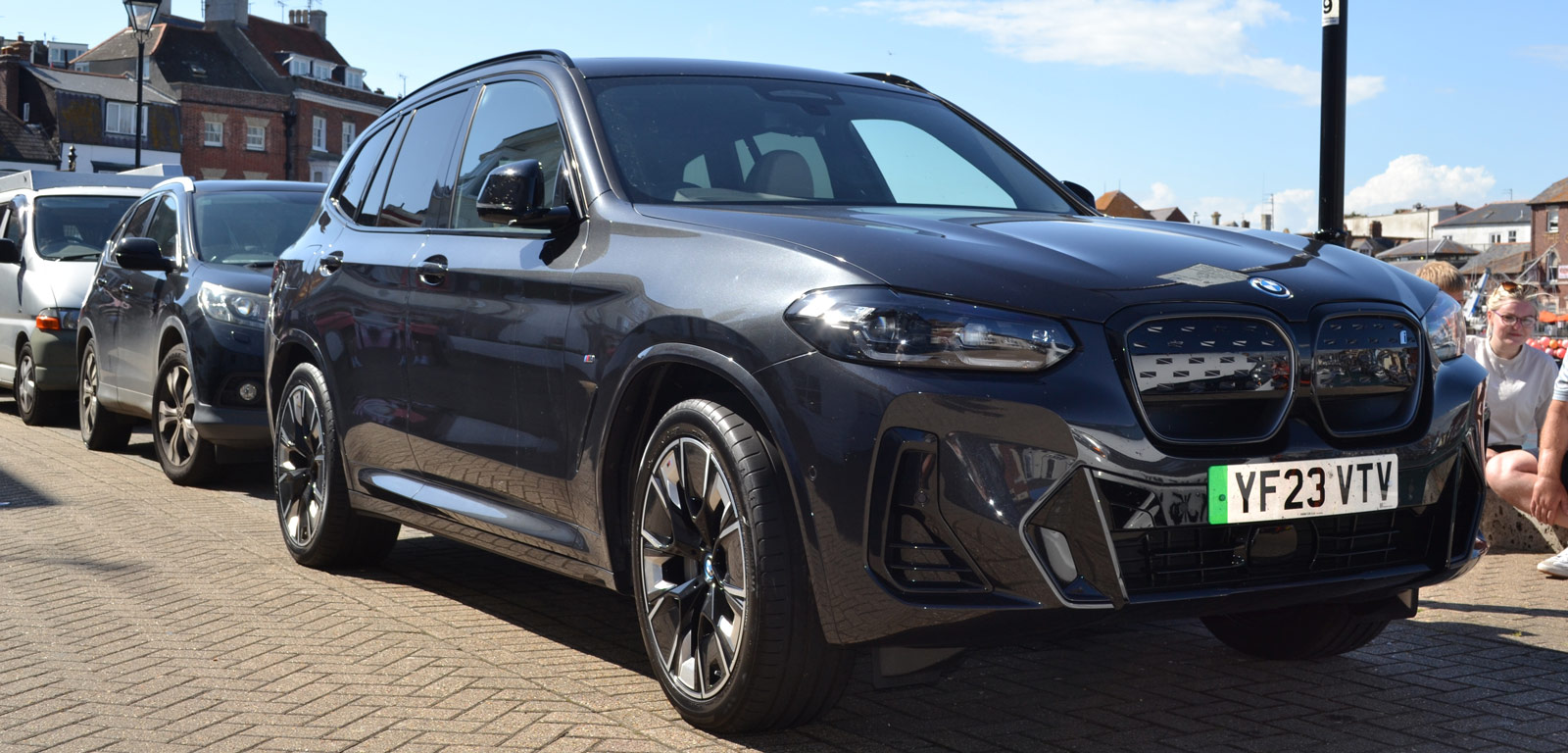
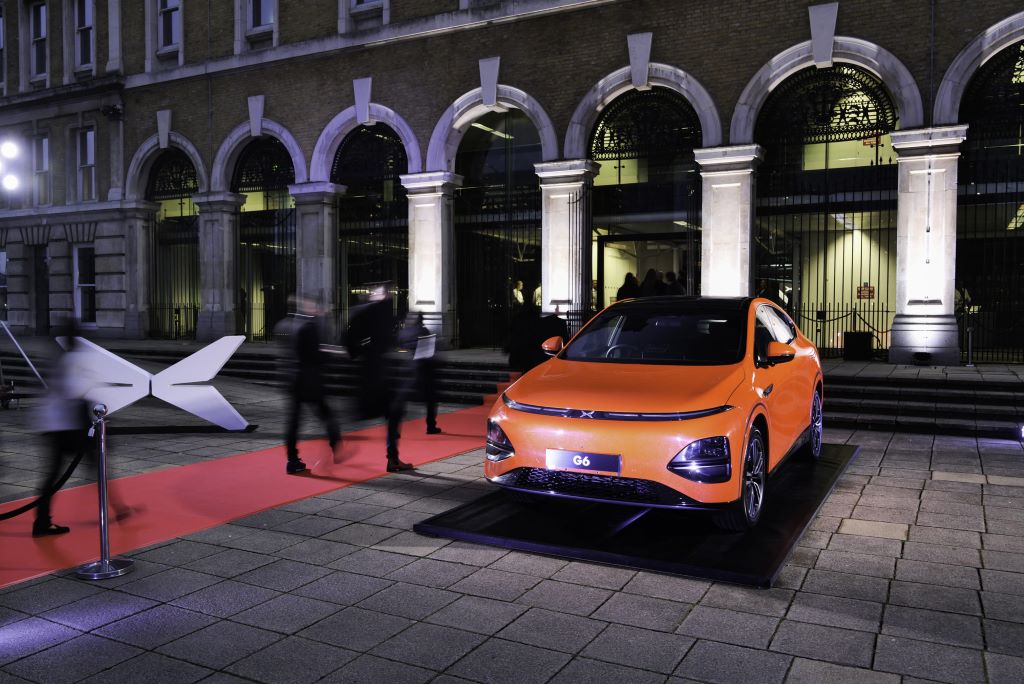

Comments (0)
Be the first to write a comment
Login/ Signup